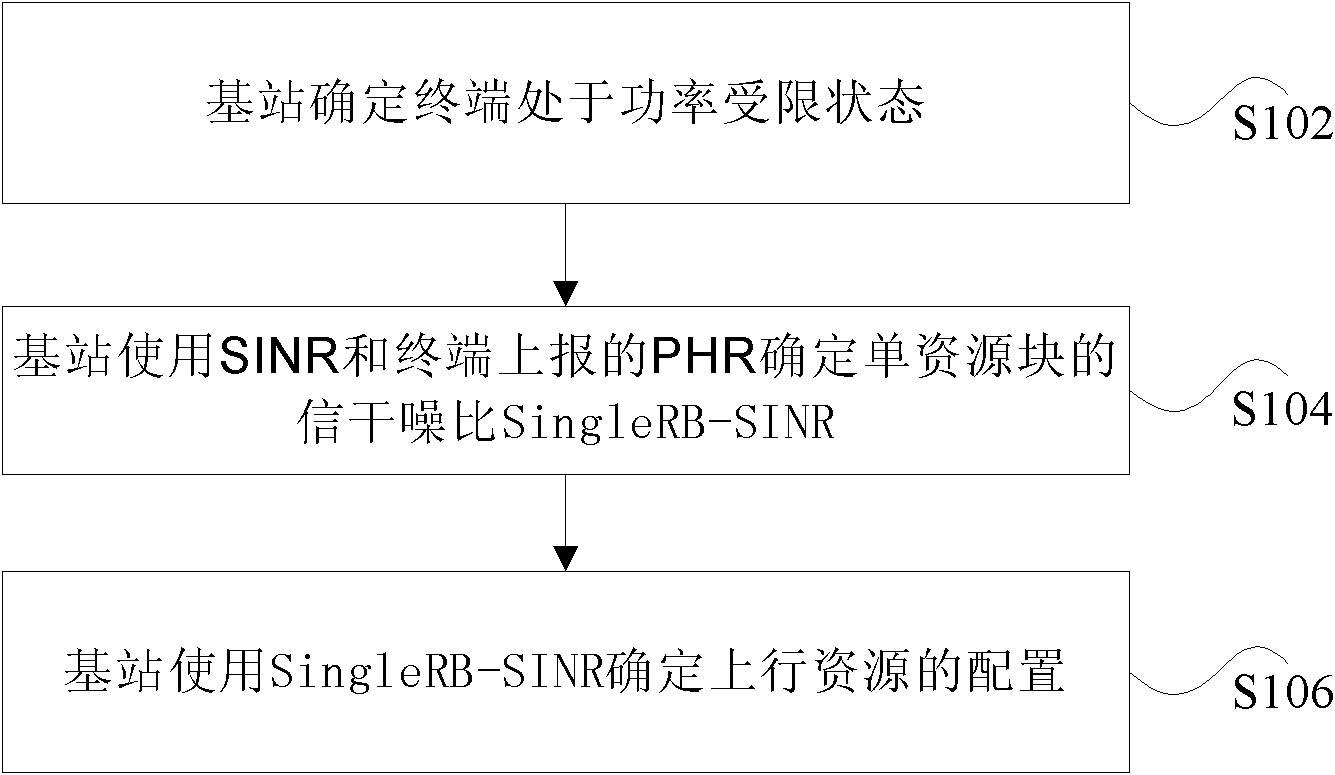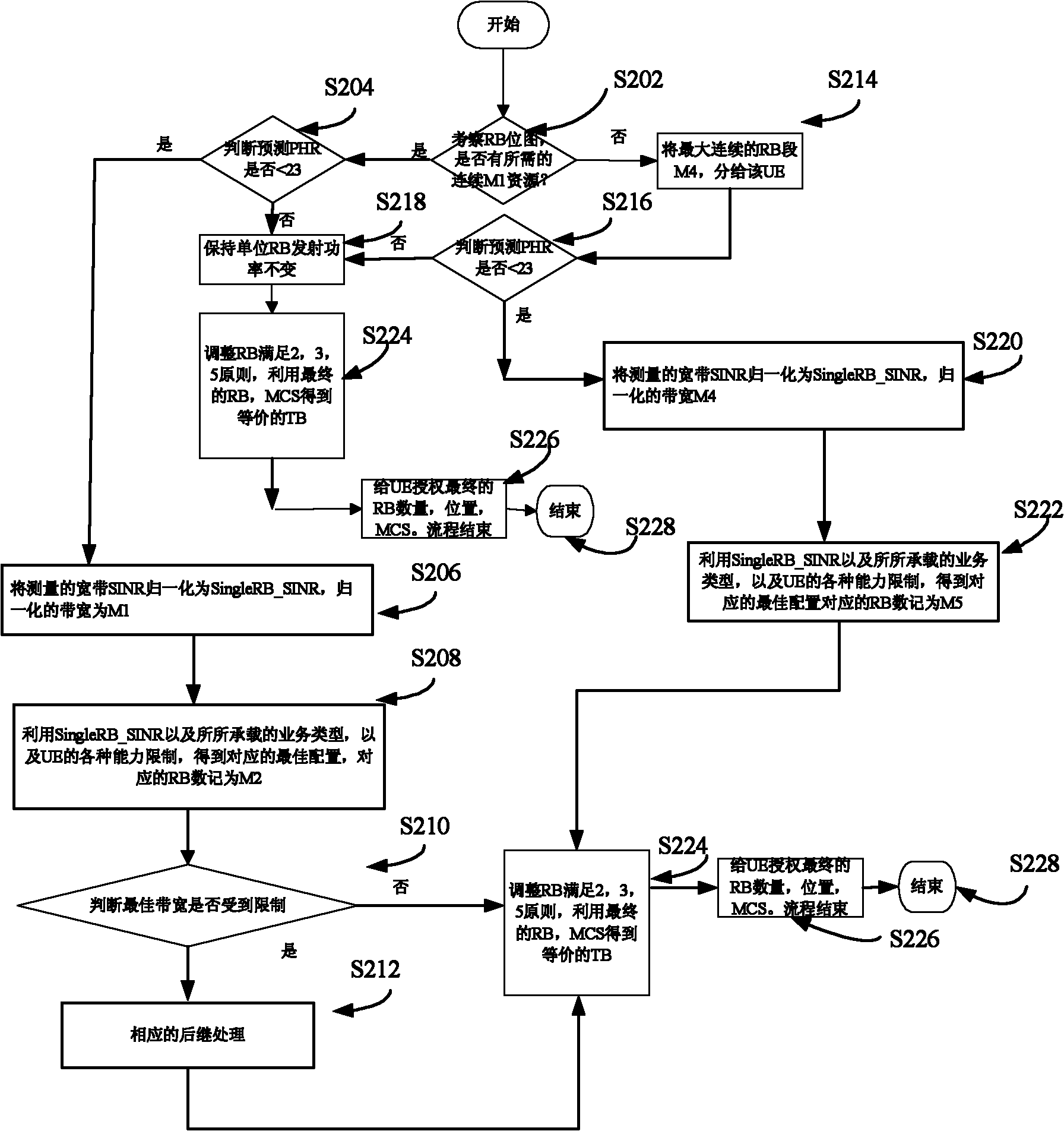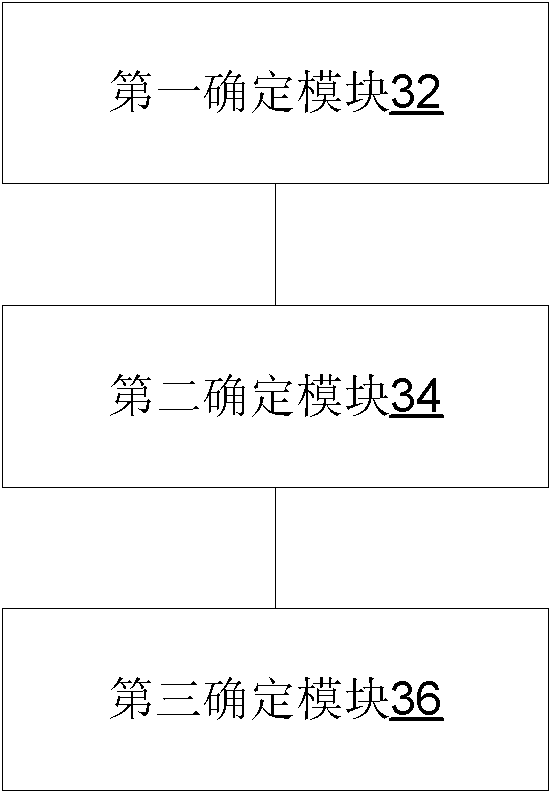Method and device for upstream resource allocation
A technology for resource allocation and resource block, applied in the field of uplink resource allocation methods and devices, can solve the problems of low resource utilization, increased bit error rate, decreased throughput, etc., and achieves the effect of improving resource utilization
- Summary
- Abstract
- Description
- Claims
- Application Information
AI Technical Summary
Problems solved by technology
Method used
Image
Examples
Embodiment 1
[0038] This embodiment provides a method for configuring uplink resources. This embodiment combines the above embodiments and preferred implementation modes therein. The method includes:
[0039] Step 1: According to the signal-to-interference and noise ratio SINR reported by the terminal, the number of resource blocks pre-allocated for the terminal's bearer service, and the latest reported PHR value and the corresponding number of RBs, determine whether there is resource limitation, whether it is limited, and the subsequent processing methods are different
[0040] Step 2: Calculate whether the current power is limited or not according to the available RB resources, and process according to the pre-allocated configuration. Special handling for restricted UEs.
[0041] Step 3: Taking the reported SINR into consideration of the effects of Adaptive Modulation and Coding (AMC) and the maximum transmission power, performing single RB conversion processing to obtain SingleRB_SINR. ...
Embodiment 2
[0046] This embodiment provides a method for configuring uplink resources. This embodiment combines the above-mentioned embodiments and preferred implementation manners. figure 2 is a flowchart of an uplink resource scheduling method combined with power information according to an embodiment of the present invention, as shown in figure 2 As shown, in this implementation, taking broadband RB allocation as an example (the process of offspring scheduling is similar to broadband) the method includes:
[0047] Step S202: According to the previously allocated RB number M1 and the RB allocation bitmap, allocate RBs starting from the smallest number. If there are M1 consecutive RBs allocated to the UE, then go to step S206; otherwise, go to step S218. TBsize, denoted as TBsize_in.
[0048] Step S204: Calculate the corresponding PHR according to the estimated number of RBs M1, if the power of the UE is limited, that is, the PHR is less than 0, go to step S206, otherwise go to step S...
PUM
 Login to View More
Login to View More Abstract
Description
Claims
Application Information
 Login to View More
Login to View More - R&D
- Intellectual Property
- Life Sciences
- Materials
- Tech Scout
- Unparalleled Data Quality
- Higher Quality Content
- 60% Fewer Hallucinations
Browse by: Latest US Patents, China's latest patents, Technical Efficacy Thesaurus, Application Domain, Technology Topic, Popular Technical Reports.
© 2025 PatSnap. All rights reserved.Legal|Privacy policy|Modern Slavery Act Transparency Statement|Sitemap|About US| Contact US: help@patsnap.com



